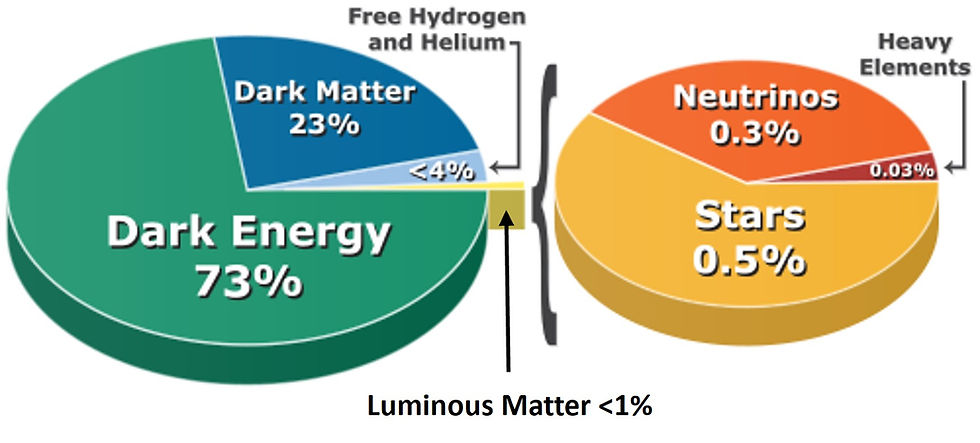Ye Are the Salt of the Earth
- stephenstrent7

- Feb 11, 2023
- 3 min read

The cover of the Morton Salt Company pamphlet, The History of Salt, after 1924; featuring the 1866 engraving by Gustave Doré of Lot’s wife being turned into a pillar of salt
Where Science Meets Religion by Trent Dee Stephens, PhD, for the Come Follow Me lesson February 13-19: Matthew 5; Luke 6
We read in Matthew 5:13, “Ye are the salt of the earth: but if the salt have lost his savour, wherewith shall it be salted? it is thenceforth good for nothing, but to be cast out, and to be trodden under foot of men.”
How does salt lose its “savor?” As long as salt is sodium chloride (NaCl), salt will taste like, well, salt. According to the 32-page pamphlet put out by the Morton Salt Company some time after 1924, entitled, The History of Salt, “The salt of the past was not alone crude and impure … it was costly and hard to obtain.” That salt was produced by “…allowing the rays of the sun to evaporate or dry up imprisoned sea water leaving rough salt…” There were “…hundreds of ‘evaporating flats’ along the shores of the Dead Sea.”1
Table salt is between 99.46% and 99.99% pure NaCl.2 Sea salt is still about 90% NaCl, and it contains other minerals such as calcium chloride (CaCl2) and potassium sulphate (K2SO4).3 The salty taste of NaCl comes from sodium (Na) whereas the chlorine (Cl) ion stimulates the sweet/umami family of receptors.4 The calcium (Ca) of calcium chloride (CaCl2) has a complex taste of bitterness, sourness, and saltiness combined.5 The potassium (K) in potassium sulfate (K2SO4) testes like salt, whereas sulfate (SO4) has a bitter, medicine-like taste – and smells like rotten eggs.6
So we’re still left with the question: how does sea salt lose its “savor?” Sea salt still tastes like “salt,” with a few minor twists. If one were to leave a small block of pure sea salt out in the rain, all of the minerals would dissolve and dissipate so that there would be nothing left to taste. So let’s go back to the statement by the Morton Salt Company that, “The salt of the past was…crude and impure …” If there was something left 2000 years ago when crude sea salt lost its savor, then there must have been other impurities in the salt beyond just calcium chloride and potassium sulfate. One can imagine that crude, impure salt sun-dried on the beach would also include some amounts of beach sand – quartz – silicon dioxide (SiO2). Silicon dioxide crystals look like salt crystals in that they are quite translucent, but SiO2 is very stable and does not dissolve in water. So if a block of sea salt containing substantial amounts of SiO2 is left out in the rain, all the salt will dissipate, leaving the SiO2, which has no taste – no savor, behind.
One can imagine that salt merchants of Christ’s time, who were selling salt at high prices by weight, wouldn’t mind a little, or even a lot of SiO2 contamination in their “salt” – especially the cheaper salt sold to poorer people such as the ones Jesus was teaching in the Sermon on the Mount.
Please join me for my weekly discussions of Where Science Meets Religion – The Infinite Creation – 6 PM each Thursday at the Century Ward meeting house (at 4th and Fredregill, Pocatello). This week’s class will be on The Creation of Stars and other issues you may want to discuss. I will also be Zooming the sessions: Meeting ID: 935 754 2152 Passcode: nka
References
1. The History of Salt, 32-page pamphlet by the Morton Salt Company, printed in the USA; no specific author or publication date given, however based on the text it was some time after 1924; lib.uchicago.edu/ead/pdf/century0030.pdf; Retrieved 5 February 2023
2. Senese, Fred, How pure NaCl is typical table salt? How is it purified? chemistry.stackexchange.com/questions/24816/how-pure-nacl-is-typical-table-salt-how-is-it-purified; Retrieved 5 February 2023
3. McVean, Ada, Under The Microscope: Sea Salt vs Table Salt, 2019; mcgill.ca/oss/article/did-you-know-nutrition/under-microscope-sea-salt-vs-table-salt; retrieved 8 February 2023
4. Atsumi, Nanako, Chloride ion evokes taste sensation by binding to the extracellular ligand-binding domain of sweet/umami taste receptors, bioRxiv, 2022; biorxiv.org/content/10.1101/2022.02.23.481615v1; retrieved 8 February 2023
5. Tordoff, Michael, Calcium: Taste, Intake, and Appetite.Physiol Rev81: 1567–1597, 2001; journals.physiology.org/doi/epdf/10.1152/physrev.2001.81.4.1567; retrieved 8 February 2023
6. Minnesota Department of Health, Sulfate in Well Water; health.state.mn.us/communities/environment/water/wells/waterquality/sulfate.html; retrieved 8 February 2023
Trent Dee Stephens, PhD
trentdeestephens.com



That is a very interesting choice of photo on the front page of the Morton Salt Company pamphlet. I wonder if you found salt left in pot from 2,000 years ago if it would still have the taste of salt. I think so